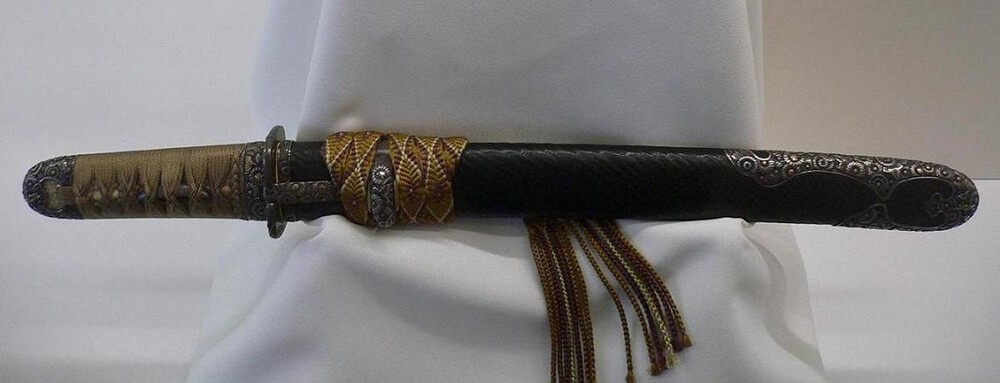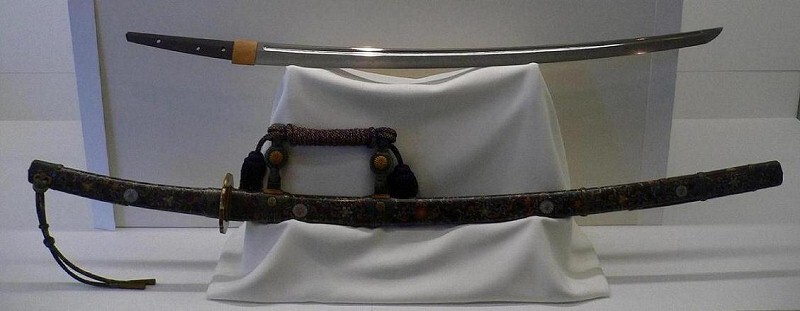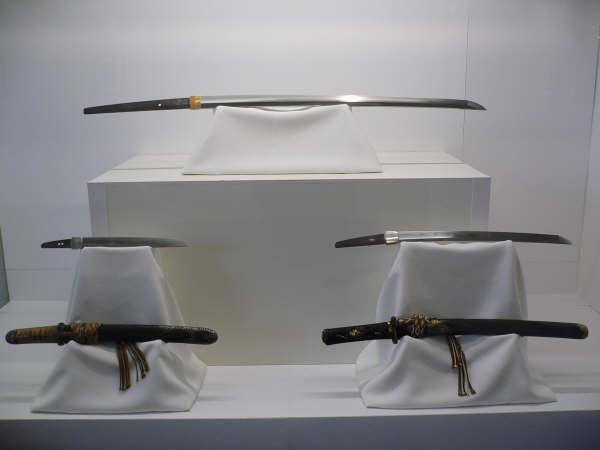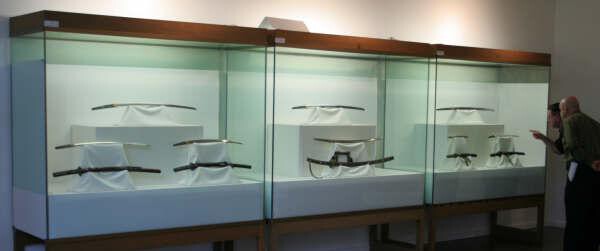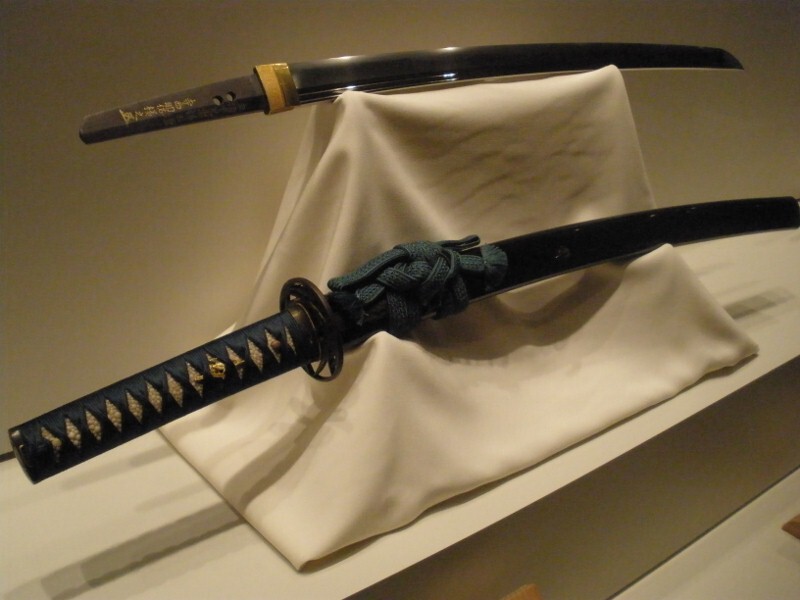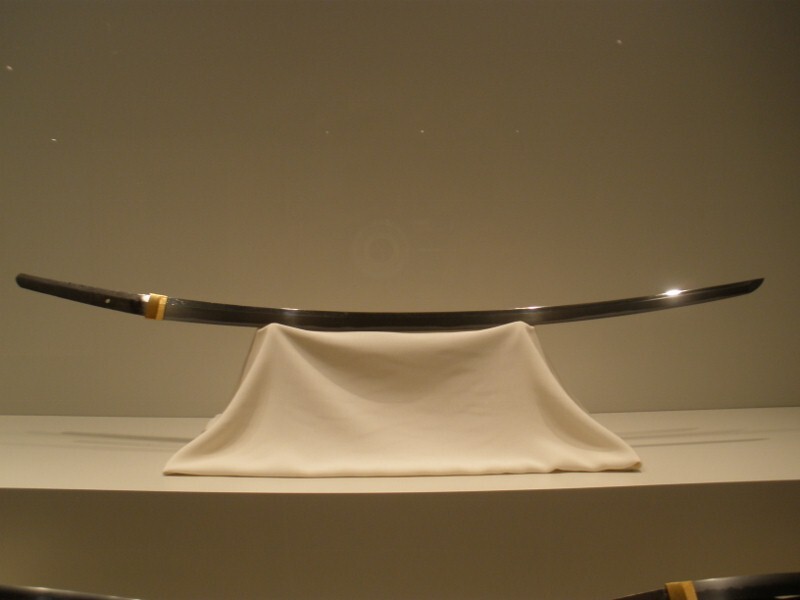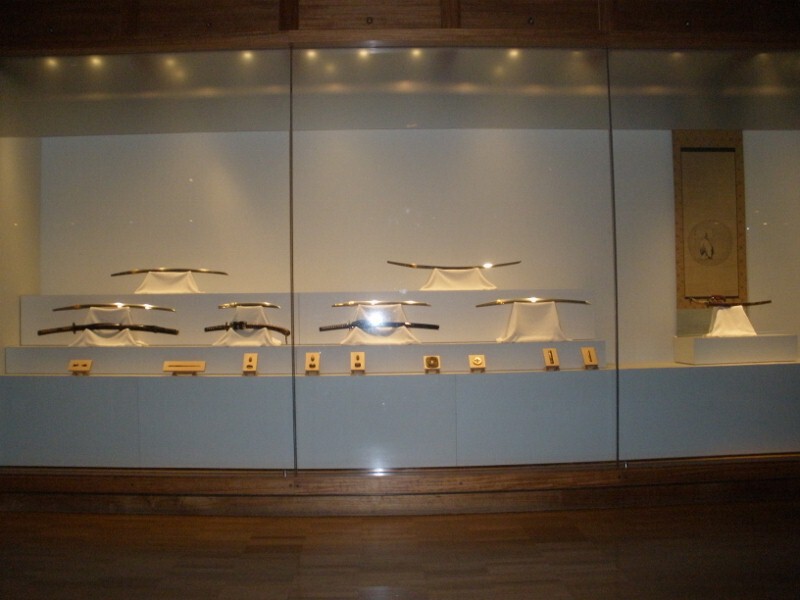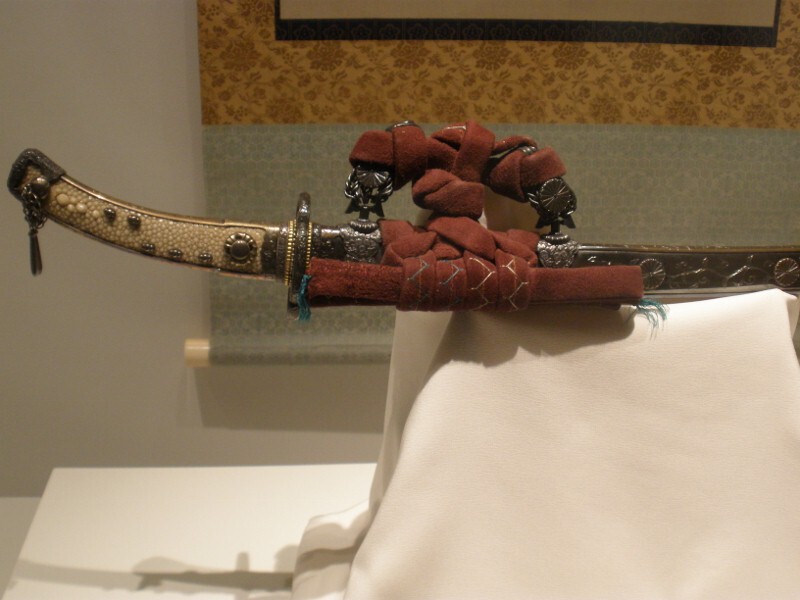-
Posts
514 -
Joined
-
Last visited
-
Days Won
5
Content Type
Profiles
Forums
Events
Store
Downloads
Gallery
Everything posted by Chishiki
-
Hi Reinhard, I think the Hizen attribution is credible based on the info available, expecially if the file marks on the tang are kesho, which I think is what I see. ?? I thought waki-hizen, not mainline Tadayoshi. The few Tadayoshi blades I have seen don't have that course nie and the jihada is much more consistent throughout. I did have a masahiro wakishashi once that had a similar hamon but it was never papered. If those file marks are kesho and tang ubu...I'll go waki hizen like you suggest. To sum it up.....I'm in the dark.
-
Ok, spoke too soon. I see nothing to suggest shinto mino as I thought I did with the 1st few pics. I thought the shinogi ji had masame but appears not. When you take photos can you angle the blade so we actually see the hamon and not the hadori from the polisher. You can show a pic of the tang with the mei covered somehow, and a photo of the hamon about the machi, and a better one of the boshi. Really difficult with those photos. Anyway I'll wait for the pics and not dig myself further into the hole. Mark
-
ahhh, so the newbie tests the not so newbies. Consider the challenge 'On'. You sly dog. (a term of endearment in your case). Mark. PS I give you fair warning that presently I have no idea, and may miss by a long shot. Always prepared to have try though. My initial thoughts were Mino den but I may about face when I see additional pics.
-
I could be wrong but I would say that the sword has been polished a number of times and what you are seeing is 'core steel'. It presents as pools of different colour steel, usually darker and without much grain structure. This can happen on 1, Old swords that have been polished a lot. 2. Some swordsmiths are noted for using thin outer steel in their forging such as Hizen Tadayoshi school, and core steel is exposed more easily on their swords 3. Later swords that have been badly polished by amateurs. Most swords have what is called 'Niku', that is that the sides of the blade between the cutting edge and shinogi are not flat. Bad polishers may polish this area down flat, exposing the core steel. There are so many variables with swords but it is either, 'core steel' or course hada due to poor forging. Whatever it is it is not a desirable trait but if it is core steel we would use the expression that the sword is 'tired' from polishing. If not core steel it maybe some feature of a particular school or smith. I remember having a sword polished once that came back with what I thought was core steel showing everywhere, I was horrfied. It turned out that it was just a poorly constructed sword from Kaga school, their steel can appear 'slaggy' for want of a better word. My advice, keep the sword and show it to someone knowledgeable in the future. Sorry for being vague. It appears in good condition and maybe a good study piece for you. You are doing the right thing. Seeing features in a sword you have and then studying them. good luck. Mark PS, why not post some pics of the boshi, an overall shot so we can see sugata, and a pic of the nakago. Someone may have a try at giving you an age of the sword.
-
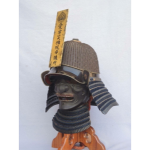
Sword Display
Chishiki replied to Chishiki's topic in Sword Shows, Events, Community News and Legislation Issues
Hi Craig, thanks everyone for the compliments. I will give you a 'heads up' about the display. Prior to the NTHK Token Kai the display will change and there will be something very special added. It will be worth the visit alone to see this one sword. More about that later. Here is a silver tanto koshirae with Chrysanthemum design. Did I spell that correctly? A very nice edo period mount. Mark -

Sword Display
Chishiki replied to Chishiki's topic in Sword Shows, Events, Community News and Legislation Issues
Hi, the next sword is an amazing cloisonne or shippo mounted sword. There is a great story to how this came to be in this country. An Australian Port Pilot (navigator) was presented with the sword by the Japanese Government for assistance rendered to the Japanese Navy in Sydney Habour in the early 1900's when they first visited this country. It is an absolutely magnificent mount decorated with the Imperial Kiku mon. This is not a touristy shippo mount that appears from time to time, it is 1st class. The blade is by Echizen Kanenaka, circa 1680. Hozon token. Mark -
Hi, if you were to ask my opinion of this sword I would advise you to walk away from it, perhaps break into a run. The jihada looks rather poor and the variant of the Mino sambonsugi hamon is not good either, a lower end piece. The decoration on the habaki looks odd. I would recommend you pass on it and wait for a better buy. You seem hopeful that it is a gendaito or shinshinto period sword. In looking at swords from this period, they should have ubu (unaltered) tangs with mei (signed). This is if you want to collect at a higher level. If a sword is not signed or the tang not ubu they are far less commercially desirable unless by a superior maker and even then their value will be seriously affected. The other considerations are condition and originality, particularly when you get to WW2 swords. Once a sword has been fiddled with it really loses its appeal to the majority of collectors. Mark Post edited by me due to excessive rambling.
-

Sword Display
Chishiki replied to Chishiki's topic in Sword Shows, Events, Community News and Legislation Issues
Hi, this sword is by Masataka, grandson of Suketaka. Shinshinto period with lovely toranba hamon in the style of Sukehiro. Hozon papers. The mounts are quite spectacular in vegetable and foliage design, fabulous to look at. Mark -

Sword Display
Chishiki replied to Chishiki's topic in Sword Shows, Events, Community News and Legislation Issues
-

Sword Display
Chishiki replied to Chishiki's topic in Sword Shows, Events, Community News and Legislation Issues
We have also done some displays in large country city art galleries. In 2006 we did displays in Benalla and Hamilton Art galleries. This photo is part of the display in Benalla. It is great that we could present swords as art to country districts as well. The displays have been very popular and well received. Art lovers are interested to know why swords are 'art'. Lectures have been presented on occasions explaining this very topic (not by me). Mark -

Sword Display
Chishiki replied to Chishiki's topic in Sword Shows, Events, Community News and Legislation Issues
Hi all, the next sword is a wakizashi by Kashu Iyehira, circa 1650 with a gold inlay cutting test and NBTHK hozon papers, a very nice sword indeed. For the Kodogu collectors the Kozuka 2nd from right is an 'O-kozuka' and you can see that very same piece in the Naunton Collection, item 3898. Sorry I don't have a Jpeg of it for those without the reference book. Regards Mark -

Sword Display
Chishiki replied to Chishiki's topic in Sword Shows, Events, Community News and Legislation Issues
Thanks Brian, let me know when I have taken up too much space on your site. This display is something that has taken Colin a long time achieve. A lot of trips to Japan, meeting the right people, and absolutely presenting them as 'art', not weapons. We hope to raise the awareness of these pieces to high 'art' levels. Not an easy task but in this case Colin succeeded. I sat looking at the display for a long time, watching reactions of viewers. The sword display seemed to be the most popular amongst old and young. Maybe it will inspire some new collectors to jump on the Nihonto Art wagon, and in the long run encourage other galleries to follow. The next sword pictured is a Mihara School Tachi. Nagasa 74cm, sori about 4cm. Uba nakago. Tobubetsu Hozon papers and Tanobe sayagaki placing the sword in the Chu-Mihara group, end of Nanbokucho/start muramachi period. Interesting to see such a long sword, ubu, one hole tang from this period. Sorry about the quality of the pics. Taking through glass in dim lighting is not easy with a small digital camera. The display is in the Asian Wing and there are many art pieces sensitive to light. It does however, when viewing the swords in person, make them look absolutely 1st class. Colin has custom hand made every sword and kodogu stand for each individual item to give him the exact proportions and perspective that he wants to achieve. When he goes to change over the display, he will take custom make stands with him. How is that for dedication? -
Hi, I am new to this site. My name is Mark and am a Nihonto collector from Australia. As my first posting I'd like to share some pics from a display of swords at the Art Gallery of New South Wales. We, a small band of collectors have had a continuous display of swords in the gallery since about 2001. For those coming over for the NTHK shinsa and sword show in March you can come and visit the display which is not far from the shinsa venue. In terms of this country, this gallery is probably the best and we are very pleased to present swords as Art to the populace. This display is made possible by Mr Colin McDonald who through is tireless efforts has secured a world class display over a long period of time. He makes a regular journey from Melbourne to Sydney to change the display. The minimum standard of swords on display is that they must be polished and have at least hozon papers. So put the word out and encourage those coming from overseas and indeed domestically to go and have a look....... You can easily spend a couple of hours in the gallery. I have added a pic of the display as it is now. The kodachi is silver mounted and dates to the meiji period with chrysanthenum theme. It has NBTHK tokubetsu kicho papers that were issued very early on when the Japanese started issuing papers to mounts. It is paper number 9. The blade with the mount has hozon papers to Uda school and is probably end of Kamakura period. Interestingly, this mount is made for a boy. What a special child he must have been. Hats off to Colin for his efforts with the display. If there is enough interest I may be able to post a few more pics. Regards Mark.


